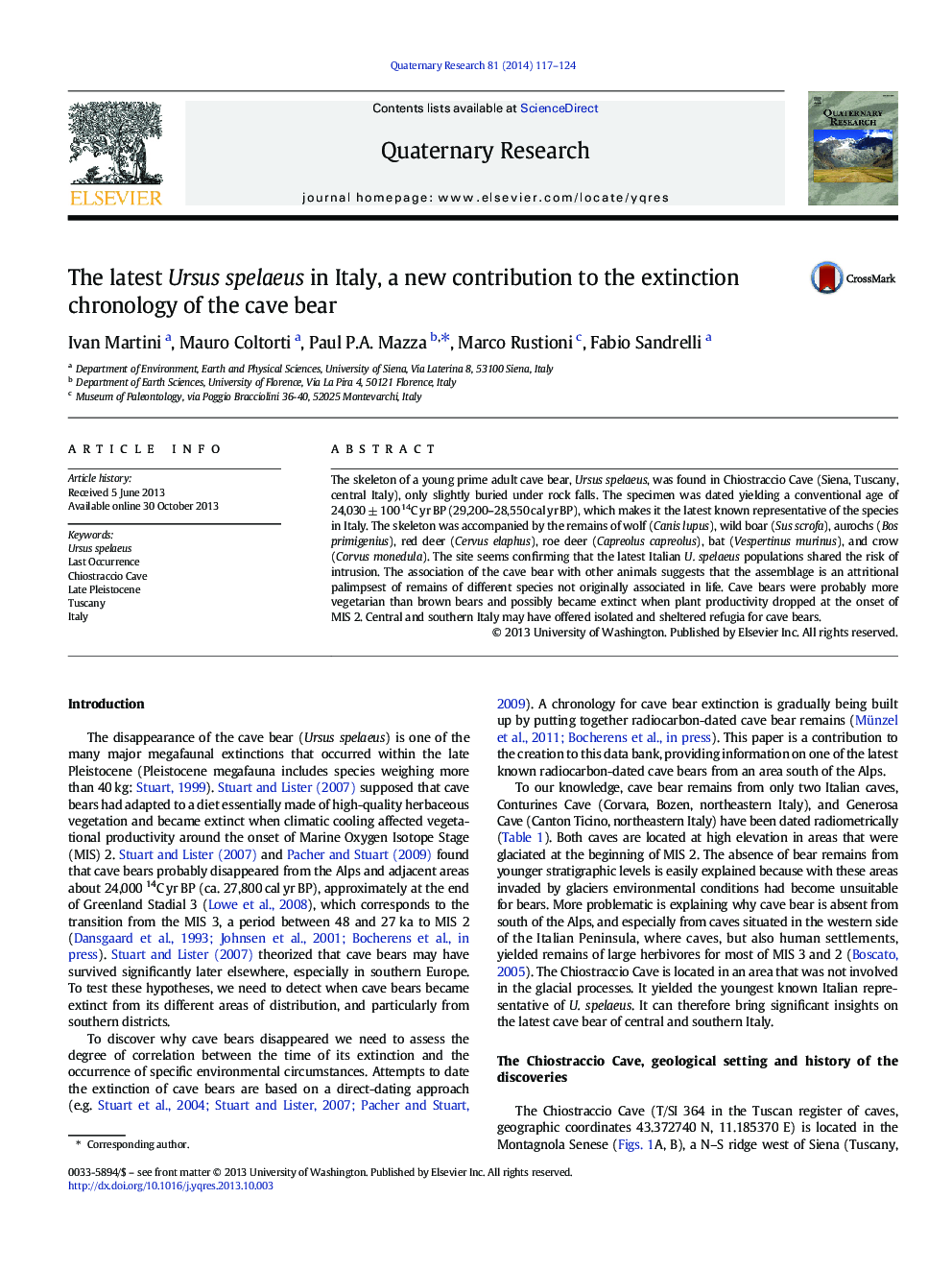| Article ID | Journal | Published Year | Pages | File Type |
|---|---|---|---|---|
| 1045349 | Quaternary Research | 2014 | 8 Pages |
The skeleton of a young prime adult cave bear, Ursus spelaeus, was found in Chiostraccio Cave (Siena, Tuscany, central Italy), only slightly buried under rock falls. The specimen was dated yielding a conventional age of 24,030 ± 100 14C yr BP (29,200–28,550 cal yr BP), which makes it the latest known representative of the species in Italy. The skeleton was accompanied by the remains of wolf (Canis lupus), wild boar (Sus scrofa), aurochs (Bos primigenius), red deer (Cervus elaphus), roe deer (Capreolus capreolus), bat (Vespertinus murinus), and crow (Corvus monedula). The site seems confirming that the latest Italian U. spelaeus populations shared the risk of intrusion. The association of the cave bear with other animals suggests that the assemblage is an attritional palimpsest of remains of different species not originally associated in life. Cave bears were probably more vegetarian than brown bears and possibly became extinct when plant productivity dropped at the onset of MIS 2. Central and southern Italy may have offered isolated and sheltered refugia for cave bears.
